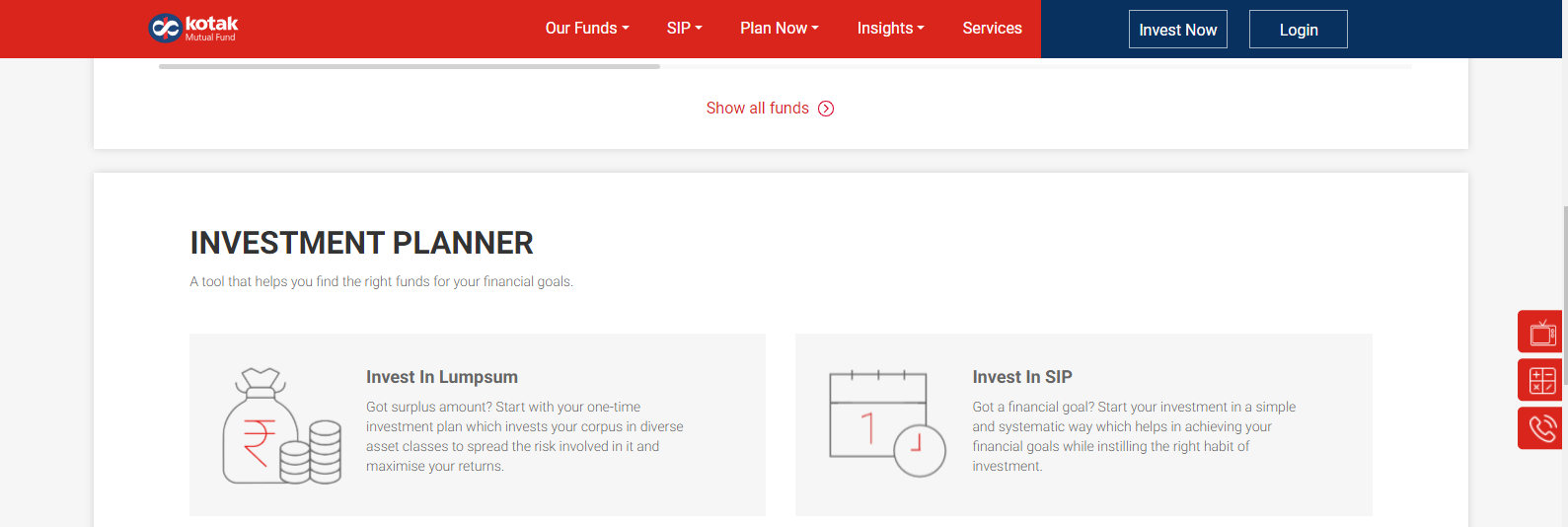Understanding Mutual Funds: Pros, Cons, and Everything In Between

Exploring the Best Mutual Funds to Invest in 2024
In the quest for the best mutual funds to invest in 2024, Nippon India Mutual Fund stands out as a beacon of potential growth and diversification. Among its array of offerings, the Nippon India Small Cap Fund presents an enticing opportunity for investors seeking exposure to high-growth potential companies. As we delve into the realm of mutual funds investment plans, systematic investment plan, particularly SIPs, and best sip plans, we’ll uncover the top 10 mutual funds for SIPs to consider in 2024, unraveling the potential for sustained returns and financial prosperity.
In the vast landscape of investment opportunities, mutual funds stand out as one of the most popular choices for both novice and seasoned investors alike. However, like any investment, mutual funds come with their own set of pros and cons that investors should carefully consider before diving in. In this comprehensive guide, we’ll delve into the world of mutual funds, small cap mutual funds, exploring their features, benefits, drawbacks, and everything in between.

What Are Mutual Funds?
Before we explore the pros and cons, let’s first understand what mutual funds are. A mutual fund is a pooled investment vehicle that collects money from multiple investors to invest in a diversified portfolio of stocks, bonds, or other securities. These funds are managed by professional portfolio managers who make investment decisions on behalf of the investors.
The Pros of Mutual Funds:
- Diversification: One of the primary advantages of mutual funds is diversification. By investing in a mutual fund, investors gain exposure to a wide range of securities, which helps spread risk across different asset classes and reduces the impact of volatility on their investments.
- Professional Management: Mutual funds are managed by experienced professionals who have the expertise and resources to research, analyze, and make investment decisions. This can be particularly beneficial for investors who lack the time or knowledge to manage their own investment portfolios.
- Liquidity: Mutual funds offer liquidity, allowing investors to buy and sell shares on any business day at the fund’s net asset value (NAV). This makes it easy for investors to access their money when needed, unlike some other investments that may have liquidity constraints.
- Convenience and Accessibility: Investing in mutual funds is relatively straightforward and accessible to individual investors. Most mutual funds have low minimum investment requirements, making them suitable for investors with varying financial capacities.
- Cost-Effective: Many mutual funds offer economies of scale, allowing investors to access a diversified portfolio at a relatively low cost. Additionally, some mutual funds have lower expense ratios compared to other investment options, such as actively managed funds.
The Cons of Mutual Funds:
- Fees and Expenses: While mutual funds can be cost-effective, they are not free. Investors may incur various fees and expenses, including management fees, administrative expenses, and sales charges (loads). These costs can eat into investment returns over time, particularly for funds with high expense ratios.
- Lack of Control: When investing in a mutual fund, investors relinquish control over the investment decisions to the fund manager. While this can be advantageous for those who prefer a hands-off approach, it also means that investors have limited control over which specific securities are included in the fund’s portfolio.
- Over-Diversification: While diversification is a key benefit of mutual funds, it is possible to over-diversify. Holding too many securities in a portfolio can dilute potential returns, especially if the fund becomes overly correlated with the broader market.
- Tax Inefficiency: Mutual funds are required to distribute capital gains to their shareholders, which can result in tax implications for investors, even if they haven’t sold any shares themselves. Additionally, actively managed funds may generate higher turnover, leading to increased tax liabilities.
- Performance Risk: Despite the expertise of fund managers, mutual funds are subject to market risks and may underperform relative to their benchmarks or other investment options. Past performance is not indicative of future results, and investors should carefully evaluate a fund’s historical performance and investment strategy before investing.
How can I invest in Mutual Funds?
Investing in mutual funds involves several steps to help investors make informed decisions and build a diversified investment portfolio. Here’s a step-by-step guide to investing in mutual funds:
Step 1: Set Your Investment Goals and Risk Tolerance
Before investing in mutual funds, it’s essential to define your investment goals, time horizon, and risk tolerance. Determine whether you’re investing for retirement, saving for a major purchase, or seeking to generate income. Additionally, assess your risk tolerance, which refers to your willingness and ability to tolerate fluctuations in the value of your investments.
Step 2: Research Mutual Funds
Once you’ve established your investment objectives and risk tolerance, research mutual funds that align with your goals. Consider factors such as the fund’s investment objectives, asset allocation, historical performance, expense ratios, and risk profile. You can research mutual funds through financial websites, fund prospectuses, and investment research platforms.
Step 3: Choose the Right Mutual Funds
Based on your research, select mutual funds that match your investment criteria and objectives. Determine whether you prefer actively managed funds, which are actively overseen by portfolio managers, or passively managed funds, such as index funds or ETFs, which aim to replicate the performance of a specific market index. Additionally, consider factors such as the fund’s investment strategy, sector allocation, and performance track record.
Step 4: Open an Investment Account
To invest in mutual funds, you’ll need to open an investment account with a brokerage firm, mutual fund company, or online investment platform. Choose a reputable and reliable provider that offers a wide selection of mutual funds, low fees, and user-friendly investment tools. Follow the account opening process, which typically involves providing personal information, selecting account types, and funding your account.
Step 5: Fund Your Account
After opening your investment account, fund it with the amount of money you intend to invest in mutual funds. You can fund your account through electronic transfers, wire transfers, checks, or direct deposits from your bank account. Once your account is funded, you’ll be ready to purchase mutual fund shares.
Step 6: Purchase Mutual Fund Shares
Using your investment account, search for the mutual funds you’ve chosen and place buy orders for the desired number of shares. Specify the amount of money you want to invest or the number of shares you wish to purchase. Mutual fund transactions typically settle at the fund’s net asset value (NAV) at the end of the trading day.
Step 7: Monitor Your Investments
After purchasing mutual fund shares, regularly monitor your investments to track their performance and ensure they remain aligned with your investment goals. Review your mutual fund holdings periodically, assess any changes in the fund’s investment strategy or performance, and consider rebalancing your portfolio if needed.
Step 8: Reinvest Dividends and Distributions
Many mutual funds offer dividend and capital gains distributions to investors. Consider reinvesting these distributions back into the mutual fund to purchase additional shares, which can help compound your investment returns over time and accelerate the growth of your investment portfolio.
Step 9: Stay Informed and Adjust as Needed
Stay informed about economic and market trends, as well as any developments that may impact your mutual fund investments. Continuously evaluate your investment portfolio, reassess your investment goals and risk tolerance, and make adjustments as needed to ensure your portfolio remains well-diversified and aligned with your long-term financial objectives.
By following these steps, investors can effectively navigate the process of investing in mutual funds and build a diversified investment portfolio tailored to their individual needs and preferences.
Read also– You can get rich using Crypto
Unlocking Mutual Funds: SIP vs Lump Sum Investment Strategies:

SIP (Systematic Investment Plan):
- Regular Investing: SIP involves investing a fixed amount of money at regular intervals, typically monthly or quarterly. This disciplined approach encourages consistent investing over time, regardless of market fluctuations.
- Rupee Cost Averaging: SIP allows investors to benefit from rupee cost averaging. Since investments are made regularly, SIP purchases more units when prices are low and fewer units when prices are high, averaging out the cost of investment over time.
- Mitigates Timing Risk: SIP helps mitigate timing risk by spreading investments over a period. This can be particularly beneficial for investors who are concerned about entering the market at the wrong time.
- Suitable for Long-Term Goals: SIP is well-suited for investors with long-term investment goals, such as retirement planning or wealth accumulation, as it allows for disciplined and gradual wealth accumulation over time.
Lump Sum Investment:
- Immediate Deployment of Funds: Lump sum investment involves deploying a large sum of money into the market all at once. This approach provides the potential for immediate market exposure and capital appreciation.
- No Timing Risk: Unlike SIP, lump sum investment does not involve timing risk since the entire investment amount is deployed at once. If the market performs well after the investment, investors can benefit from higher returns.
- Appropriate for Market Timing: A lump sum investment may be suitable for investors who can time the market or are strongly convinced about market movements. However, successfully timing the market consistently is challenging and involves inherent risks.
- Flexibility: Lump sum investment offers flexibility as investors can choose when to deploy their funds based on market conditions, investment opportunities, or personal circumstances.
Top-10 Mutual Funds Companies of 2023
India’s Top 10 best mutual fund to invest in India:
1. Nippon India Mutual Fund:
– Formerly known as Reliance Mutual Fund, Nippon India Mutual Fund is one of India’s leading mutual fund houses, offering a diverse range of investment solutions tailored to meet various investor needs. With a focus on innovation and customer-centricity, Nippon India Mutual Fund aims to provide superior returns and value to its investors.
2. SBI Mutual Fund:
– SBI Mutual Fund is a subsidiary of the State Bank of India, India’s largest public sector bank. With a robust presence across the country and a wide range of mutual fund schemes spanning equity, debt, hybrid, and thematic categories, SBI Mutual Fund caters to the diverse investment preferences of investors.
3. ICICI Prudential Mutual Fund:
– ICICI Prudential Mutual Fund is a joint venture between ICICI Bank, one of India’s largest private sector banks, and Prudential plc, a leading international financial services group. Known for its strong research capabilities and innovative product offerings, ICICI Prudential Mutual Fund has established itself as a trusted name in the mutual fund industry.
4. HDFC Mutual Fund:
– HDFC Mutual Fund, a subsidiary of Housing Development Finance Corporation Limited (HDFC), is one of India’s largest and most respected mutual fund companies. With a focus on delivering consistent and superior investment performance, HDFC Mutual Fund offers a wide range of mutual fund schemes across asset classes and investment styles.
5. Aditya Birla Sun Life Mutual Fund:
– Aditya Birla Sun Life Mutual Fund is a joint venture between Aditya Birla Group, one of India’s leading conglomerates, and Sun Life Financial Inc., a leading international financial services organization. With a commitment to delivering long-term value to investors, Aditya Birla Sun Life Mutual Fund offers a diverse range of investment solutions to suit different investor needs.
6. Axis Mutual Fund:
– Axis Mutual Fund is a subsidiary of Axis Bank, one of India’s largest private sector banks. Known for its customer-centric approach and innovative product offerings, Axis Mutual Fund aims to create wealth for its investors through disciplined investment processes and rigorous risk management practices.
7. Kotak Mahindra Mutual Fund:
– Kotak Mahindra Mutual Fund is a part of Kotak Mahindra Asset Management Company Limited (KMAMC), a wholly-owned subsidiary of Kotak Mahindra Bank Limited. With a focus on delivering consistent and superior investment performance, Kotak Mahindra Mutual Fund offers a wide range of mutual fund schemes across asset classes and investment styles.
8. Mirae Asset Mutual Fund:
– Mirae Asset Mutual Fund is a subsidiary of Mirae Asset Global Investments Co., Ltd., a leading global financial services firm headquartered in South Korea. With a focus on research-driven investment strategies and a long-term investment horizon, Mirae Asset Mutual Fund aims to deliver sustainable wealth creation for its investors.
9. UTI Mutual Fund:
– UTI Mutual Fund is one of the oldest and most trusted mutual fund companies in India, with a legacy spanning over five decades. Backed by a strong heritage and a commitment to investor welfare, UTI Mutual Fund offers a wide range of mutual fund schemes designed to meet the diverse needs of investors across different risk profiles.
10. Franklin Templeton Mutual Fund:
– Franklin Templeton Mutual Fund is a part of Franklin Templeton Investments, a global investment management organization with over seven decades of experience. With a focus on delivering consistent, risk-adjusted returns over the long term, Franklin Templeton Mutual Fund offers a diverse range of investment solutions across asset classes and investment styles.
You may also like – Pi Network and Pi Coin: Redefining Cryptocurrency Mining and Accessibility
Frequently Asked Questions (FAQ) About Mutual Funds
- What is a mutual fund?
- A mutual fund is a pooled investment vehicle that collects money from multiple investors to invest in a diversified portfolio of stocks, bonds, or other securities. These funds are managed by professional portfolio managers.
- How do mutual funds work?
- Mutual funds work by pooling money from investors to create a diversified portfolio of securities. The fund’s performance is based on the performance of its underlying investments, and investors buy shares of the mutual fund, which represent their ownership in the fund’s assets.
- What are the benefits of investing in mutual funds?
- Some benefits of investing in mutual funds include diversification, professional management, liquidity, convenience, and accessibility to a wide range of investment options.
- What are the different types of mutual funds?
- Mutual funds can be categorized into various types based on their investment objectives, asset classes, and investment strategies. Common types include equity funds, bond funds, balanced funds, index funds, and sector funds, among others.
- What is a systematic investment plan (SIP)?
- A systematic investment plan (SIP) is a disciplined investment approach where investors regularly contribute a fixed amount of money into a mutual fund at predefined intervals. SIPs enable investors to benefit from rupee-cost averaging and build wealth over the long term.
- How do I choose the right mutual fund for me?
- Choosing the right mutual fund involves considering factors such as your investment goals, risk tolerance, time horizon, and investment preferences. It’s essential to research and evaluate the fund’s performance, investment strategy, fees, and historical returns before investing.
- What are the risks associated with mutual funds?
- While mutual funds offer potential rewards, they also come with risks. Common risks include market risk, liquidity risk, credit risk, interest rate risk, and currency risk. Additionally, mutual funds are subject to management risk and regulatory risk.
- How are mutual funds taxed?
- Mutual funds are taxed based on the type of income they generate and the holding period of the investment. Capital gains from mutual funds are taxed as short-term or long-term capital gains, depending on the holding period, while dividends are subject to dividend distribution tax (DDT).
- Can I lose money investing in mutual funds?
- Yes, like any investment, investing in mutual funds carries the risk of losing money. The value of mutual fund investments can fluctuate based on market conditions and the performance of the underlying securities.
- How can I start investing in mutual funds?
- To start investing in mutual funds, you can open an account with a mutual fund company or a brokerage firm, complete the necessary paperwork, and fund your account. You can then research and select mutual funds that align with your investment objectives and begin investing.

i am frequent blog post writer about warriors topics like business, health and sports on my site bloggingfrog.com. little knowledge I have I want to distribute it with everyone around the wrold








